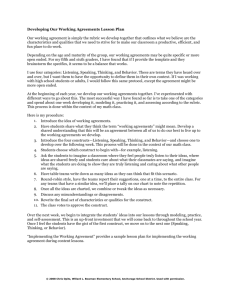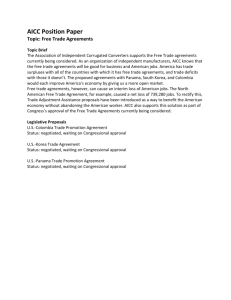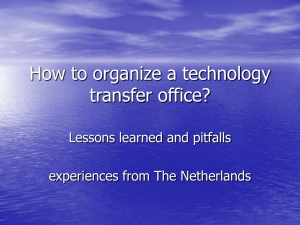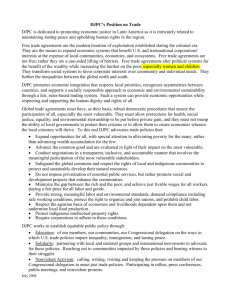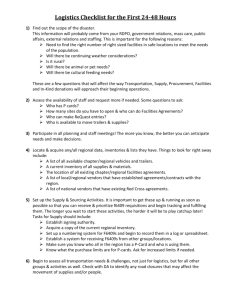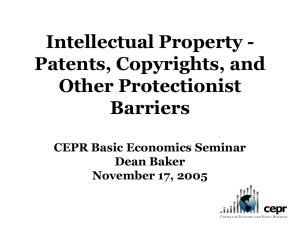SBDC Business Plan Outline
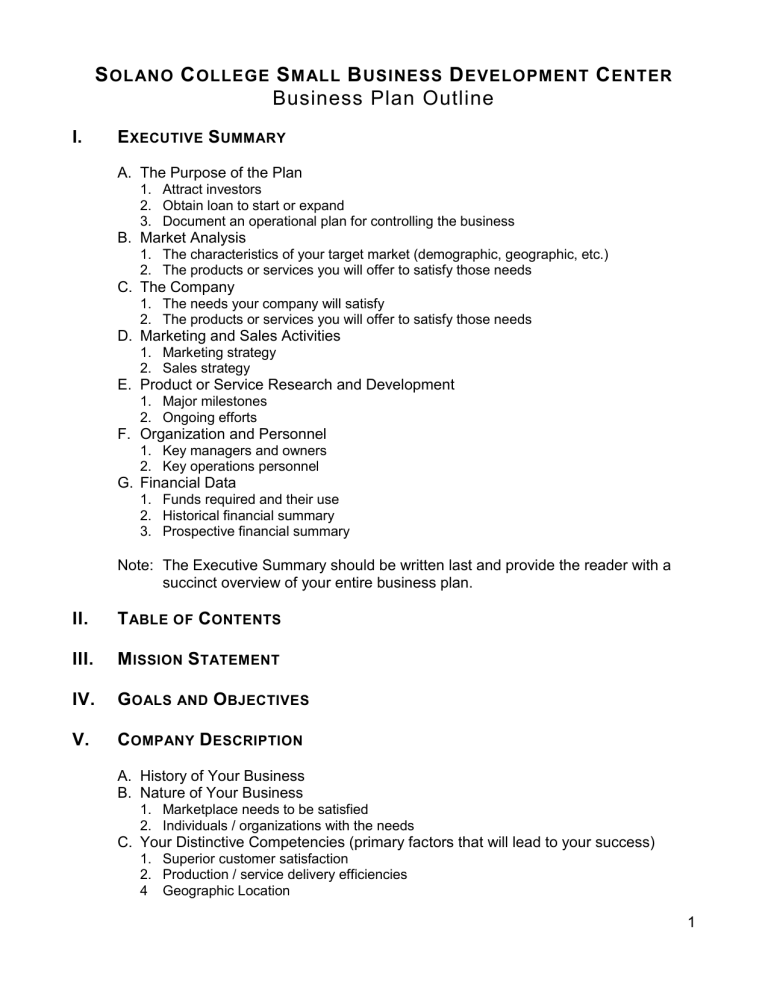
S
OLANO
C
OLLEGE
S
M ALL
B
USINESS
D
EVELOPMENT
C
ENTER
Business Plan Outline
I. E XECUTIVE S UMMARY
A. The Purpose of the Plan
1. Attract investors
2. Obtain loan to start or expand
3. Document an operational plan for controlling the business
B. Market Analysis
1. The characteristics of your target market (demographic, geographic, etc.)
2. The products or services you will offer to satisfy those needs
C. The Company
1. The needs your company will satisfy
2. The products or services you will offer to satisfy those needs
D. Marketing and Sales Activities
1. Marketing strategy
2. Sales strategy
E. Product or Service Research and Development
1. Major milestones
2. Ongoing efforts
F. Organization and Personnel
1. Key managers and owners
2. Key operations personnel
G. Financial Data
1. Funds required and their use
2. Historical financial summary
3. Prospective financial summary
Note: The Executive Summary should be written last and provide the reader with a succinct overview of your entire business plan.
II. T ABLE OF C ONTENTS
III. M
ISSION
S
TATEMENT
IV. G OALS AND O BJECTIVES
V. C OMPANY D ESCRIPTION
A. History of Your Business
B. Nature of Your Business
1. Marketplace needs to be satisfied
2. Individuals / organizations with the needs
C. Your Distinctive Competencies (primary factors that will lead to your success)
1. Superior customer satisfaction
2. Production / service delivery efficiencies
4 Geographic Location
1
IV. P RODUCTS AND S ERVICES
A. Detailed Product / Service Description
1. Specific benefits of product / service
2. Ability to meet demands
3. Competitive advantages
4. Present stage (idea, prototype, small production runs, etc.)
B. Product Life Cycle
1. Description of the product / service’s current position within its life cycle
2. Factors that might change the anticipated life cycle
C. Copyrights, Patents and Trade Secrets
1. Existing or pending copyrights or patents
2. Anticipated copyright and patent filings
3. Key aspects of your products or services that cannot be patented / copyrighted
4. Key aspects of your products or services that qualify as trade secrets
5. Existing legal agreements with owners and employees a. Nondisclosure agreements b. No compete agreements
D. Research and Development Activities
1. Activities in process
2. Future activities (include milestones)
V. M
ARKET
A
NALYSIS
A. Industry Description and Outlook
1. Description of your primary industry
2. Industry characteristics and trends
B. Target Markets
1. Distinguishing characteristics of your primary target markets a. Critical needs b. Extent to which those needs are currently being met c. Demographics d. Psychographics e. Geographic location f. Key purchasing decision-makers and influences g. Seasonal / cyclical trends h. Target market size i. Geographic area j. Anticipated market growth / key trends
2. Secondary target markets and key attributes a. Needs b. Demographics c. Psychographics d. Significant future trends
C. Competition
1. Identification of key competitors (direct & indirect)
2. Strengths (competitive advantages)
3. Weaknesses (competitive disadvantages)
4. Barriers to entry into the market a. Cost (investment) b. Technology
2
c. Key personnel d. Customer inertia (brand loyalty, existing relationships, etc.) e. Existing patents and trademarks
VI. M ARKETING S TRATEGIES
A. Product Strategy
1. Product or service mix offered to primary target market
2. Product or service mix offered to secondary target market
B. Pricing Strategy
1. Proposed or existing pricing of product or services
2. Competitor’s pricing
3. Discount structure (volume, prompt payment, etc.)
C. Place or Distribution Strategy (Channels of Distribution)
1. Original equipment manufacturers
2. Internal sales force vs. independent reps
3. Distributors
4. Retailers
D. Promotion Strategy
1. Advertising
2. Public relations
3. Personal selling
3. Printed materials
4. Website
VII. O
PERATIONS
A. Description of Facilities
B. Production, Service Delivery Procedures & Capability
C. Suppliers
VIII. M ANAGEMENT AND O WNERSHIP
A. Key Managers & Staff Structure
B. Planned Additions to the Current Management Team
C. Legal Structure of Business
1. Sole Proprietor
2. Partnership
3. Limited Partnership
4. Corporation
5. Limited Liability Company (LLC)
D. Owners
1. Names and Percentage of ownership
3. Extent of involvement with company
4. Form of ownership (common stock, preferred stock, general or limited partner)
F. Board of Directors
1. Names
2. Position on the board
3. Extent of involvement with company
4. Background
5. Contribution to the company’s success
3
IX. F UNDS R EQUIRED AND T HEIR U SES
A. Current and Future Funding Requirements
1. Amount and use of funds a. Capital expenditures b. Working capital c. Debt retirement d. Acquisitions
2. Timing
3. Type a. Equity c. Debt
4. Terms
X. F INANCIAL D ATA
A. Historical Financial Data (past 3-5 years)
1. Annual statements a. Income b. Balance sheet c. Cash flow
B. Prospective Financial Data (next three years)
1. First year by month, summary years two & three a. Income b. Balance sheet c. Cash flows
2. Summary of significant assumptions
C. Analysis
1. Historical financial statements a. Ratio analysis b. Trend analysis
2. Prospective financial statements a. Ratio analysis d. Trend analysis
XI. A PPENDICES OR E XHIBITS
A. Resumes of Key Managers
B. Pictures of Products
C. Professional References
D. Market Studies
E. Patents
F. Significant Contracts
1. Leases
2. Sales contracts
3. Purchase contracts
4. Partnership / ownership agreements
6. Employment / compensation agreements
7. Non compete agreements
8. Insurance
4

